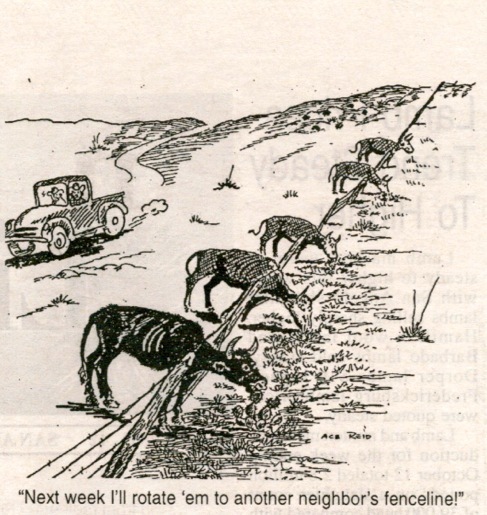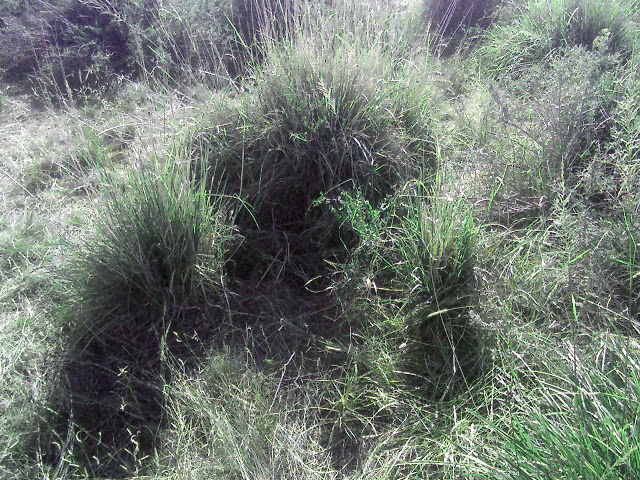Cows and Desert Mule Deer

This is the third in a series about how cattle can benefit wildlife and habitat. Our previous two articles addressed quail and pronghorn.
Desert mule deer are native to several Western states, and are in decline in New Mexico and West Texas.
Notwithstanding vast accumulated knowledge about them, no expert can explain why, or show how to reverse this: Of various educated guesses, none consider the central point of these articles: The decline of wild animals including mule deer closely mirrors the destocking of the Western ranges where for millions of years large grazers were fundamental to diverse and interdependent animal and plant communities. For millions of years, through ever-changing climates, large herds of grazers moved nomadically through the deserts of the Southwest. Animals were forced to concentrate for protection from the packs of predators which shadowed them. Concentrated herds soon exhausted food and water and had to move on. And so, Nature’s grazing pattern was large animal numbers, in constant motion, present only where there was food and water, which meant only for short periods in any spot, then absent until infrequent seasonal rain returned to restart the cycle.
Like all animals deer need food, water, space and safety from their enemies. Unlike whitetail, mule deer are especially vulnerable to human tampering with ecological processes. Let us consider these:
Food. While deer are often described as browsers they are also grazers, of weeds (forbs) not grass. Like quail and pronghorn, mule deer need weeds. Cattle also rely for up to 1/3 of their diet on weeds. Weeds are critical to the health of other plants. Annual and perennial weeds channel water and cause organic accumulation into subsoil. Richer, wetter soil helps all plants and animals. Annual weeds thrive when soil is disturbed: in nature, most disturbance comes from the hooves of animals.
There were high numbers of deer in the 60’s and early 70’s with heavy grazing: those cattle are all in feedlots today and the destocking mirrors decline of several species including mule deer, pronghorn and quail. The central insight of planned grazing (disputed by conventional range theory) is that lack of grazing and soil disturbance from large animals has caused grass and weeds to die, covered ground to become bare, and soil to dry out. It has also caused the incursion of brush, which invariably replaces grasses when animal impact ceases (to understand why, think how your lawn would look if it was no longer mowed). Brushy conditions favor whitetail deer which displace mule deer. In far-West Texas and New Mexico, invasive brush is often treated with the use of chemicals like Spike. However, Spike kills weeds, especially more vulnerable, deeper-rooted perennial weeds, along with brush. So in treating brush chemically, we reduce quail, pronghorn, deer and cattle food.
One intuitive answer to declining range conditions is to introduce artificial feed. This will work in the short term but feeding wildlife is economically and physiologically unsustainable over long-terms. Instead, ranchers could better spend their money creating natural feed, by mimicking nature.
“Planned Grazing Is More Than A Rotational Grazing System”
Without weeds and grass, heavier use of browse results. This is sometimes misinterpreted as overstocking of deer and leads to culling does even though mule deer are in decline!
Water. Mule deer need water. Cattle water helps deer and replaces natural springs and waterholes which have diminished due to human impact. Windmills have been replaced with submersible pumps, further lowering water tables. Water can be an ambush point: Multiple water points reduce this risk.
A primary reason for mule deer decline is lack of winter moisture: This drives reproductive success and summer rains control adult survival. Reduced humidity is a serious issue.Whatever the global weather cycle or its cause, in our deserts humans magnify drought by reducing how much rain soaks in. With the loss of plant cover most rain now runs off or evaporates making scant desert rainfall less “effective.” Aquifer recharge is dimished.
Space. Desert mule deer need open space. The shift to brush in our Southwestern deserts is devastating for mule deer and as discussed above, the typical treatment, Spike, reduces mule deer food. High fences worsen the problem because mule deer have been found to need to move across very large ranges to find food: More on this below.
“Mule deer prefer rugged, open ranges.”
Safety From Predators. Mule deer like all animals need to be able to hide their young and flee predators. The intuitive answer to predation is to kill predators like mountain lions; a primary enemy of large mule deer particularly bucks after the breeding season, and coyotes which get after fawns. But this is a great mistake: Long-term predator control is bad for mule deer. The classic example of bad mule deer “management” is the disaster on the Kaibab Plateau on the North rim of the Grand Canyon. There, cougar were removed along with all large grazers (cattle having replaced bison). Without predators the deer herd exploded and without large grazers the habitat cratered: population collapsed. Neither has ever recovered (to this day almost every mule deer expert “knows” large cattle numbers hurt mule deer).
Assuming predation is a problem, the best way to protect mule deer fawns is to stimulate the growth of grass and forbs through intensive, short-duration planned grazing, leaving 70% of the plants as standing cover where does can hide fawns. This is also better for pronghorn, quail and cattle performance, and for plants: It turns out all these need the same things.
“Does and bucks herd together as youngsters, then separate.”
Hunting. Even though mule deer are in decline, mule deer management relies on whitetail practices designed to deal with severe overpopulation of a species which has thrived alongside human impact. The Texas whitetail challenge is underhunting: many managers act as if this applies to mule deer.
“Many managers and hunters would consider this immature buck ‘harvestable’ but it is at least 2-years too young.”
Excessive hunting pressure on Western public lands is driven by the financial needs of management agencies. Over in Texas, at the Sierra Diablo WMA next to Circle Ranch, in 2010 & 2011 – the worst recorded drought in Texas history – bucks and does were killed at a rate that, if reflected across Hudspeth County, would have removed 1636 bucks and 2181 does from the herd!
Texas harvest decisions are based on whitetail deer count methods which can overcount mule deer. Increased efficiency of hunters using vehicles, telescopic sights and better rifles with more time increases hunter success. Any deer removal, especially “culling” of “management” bucks and does leaves fewer deer for predators, increasing pressure on does and fawns. As a general statement, mule deer must be harvested sparingly.
“Mule deer are herd animals. You may see many or none depending on the herd’s location. Because deer-count techniques assume random distribution (true for whitetail) they can produce massive under-or-over estimates of population.”
Human Tampering: High Fences, CWD and Breeding Programs. High fences and CWD are related. High-fencing appears imminent in far-West Texas mule deer country. Here is what we know about it from experience elsewhere.
Chronic Wasting Disease (CWD), already in New Mexico mule deer herds, was recently found in far-West Texas. CWD is invariably fatal and highly contagious to all of the deer (cervid) family. All cases of CWD in the United States can be traced back to Colorado; all Colorado cases can be traced back to the Foothills Wildlife Research Station (operated by the Colorado Department of Wildlife) in Ft. Collins where “management” activities conducted in the 60’s had the tragic unintended consequence of creating a new disease, a deer version of “Mad Cow Disease.” Deer and elk were confined with domestic sheep which had been exposed to scabies, behind high fences, fed and watered from common points. The disease was not recognized until several infected animals had been transferred to other high fenced areas. They in turn infected other animals. Some of these got loose; others were sold or given to other states. The genie was out of the bottle.
Without high fences there would never have been CWD. High -fenced areas accelerate the spread of CWD, because the disease-transmitting agents (prions) remain in the soil for many years and infect animals that are confined on infected feces and urine, or are bumping noses with other animals at feed and water points. Heaven forbid that CWD ever finds its way into the many high-fenced small properties of Central and South Texas: It will devastate Texas deer herds.
CWD-infected mule deer can live for years and spread the disease. Swift removal by natural process is the best way to suppress CWD. In open ranges with widely-dispersed deer populations, mountain lions are the best tool. Sick mule deer are vulnerable, and lions seem immune to CWD (based on failed brain-to-brain experimental transfers).
Generally, high-fence game farming is economically unsustainable, and as usually practiced is damaging to wildlife and habitat. The set stocking of unnaturally high numbers of deer devastates the habitat inside the fences, as does set stocking of cattle at any density inside any fence.
A primary high-fence objective is genetic manipulation. Animals are bred for one characteristic: big racks. Eventually, these find their way back into the wild population with unknown effects on native gene pools.
High-fenced deer are often raised on artificial food and minerals. We do not understand the lasting effects of these on deer or other species but for example the copper in antler-growth supplements is lethal to desert bighorn.
Captive fawn survival compared to free-range deer is reported in Texas to be as low as 14%: In my opinion, this is probably because does are not giving fawns their natural antibodies including “medicine” coming through weeds and other natural food, and, is a result of genetic-tinkering.
“Cattle-ization of deer poses unknown dangers to the genetics of wild populations, including fawn survival”
Finally, these high fenced areas create ethical issues having to do with Fair Chase hunting.
It dismays me that Big Wildlife (agencies, non-profits, universities and agribusiness) advocates, teaches, praises and, in some cases even pays for the use of Spike, artificial feed, high fences, predator eradications, and removal of cattle and other beneficial non-natives. How many “wildlife management” disasters like CWD, the Kaibab tragedy and disappearance of treasured species must occur before we realize that management which fights Nature eventually backfires?
The answer to this mystery of mule deer disappearance is rather simple, at least in concept: We must restore our native plants through animal impact by mimicking nature, encouraging biodiversity and ceasing single species management. Whether any animal other than a “native” should be used is hotly debated: The fact is that 80% of native animals on this continent disappeared when early humans arrived. Consequently there are many empty niches in the ecological system which will benefit from having some animal species in them; plants don’t care where animal impact comes from, so long as they get what they need. Cattle merely replace bison but many other animals might work. Cows are just easier, pay for themselves, and can be vaccinated against wildlife diseases. Let us approach this issue with common sense and pragmatism.
“Exotic” cattle are the only animal that could have gotten this high, dense grass into perfect shape for baby quail, deer, pronghorn, and elk.
In this spirit HMI is presenting a series of classes based on the use of cattle to help wildlife. Cows and Quail is the only wildlife and habitat class based on the recognition that plants need animals as much as animals need plants. Watch for one near you
Coming next: Cows and Bighorn Sheep
My thanks to Steve Nelle, Tom Wadell, Guy Glosson, and Ann Adams for their critiques of this piece.







